How to Get the Most Out of Your Fundraising Plan
The key is to actually use it!
 Here are 5 key tips for using your plan to guide your program and realize your goals:
Here are 5 key tips for using your plan to guide your program and realize your goals:
Make your fundraising plan a living document.
You’ve put so much work into creating a fundraising plan for 2021, so don’t let it collect dust. Start by saving the plan in a shared work drive so that your entire team has access to the latest version. Then use your plan as a master playbook for the year. It will empower you to look ahead and plan for upcoming milestones such as projects and programs, to review progress toward goals on a regular basis, and to make course corrections as needed. In this volatile environment, we recommend monitoring your fundraising goals every month. Use a consistent monthly monitoring tool to be sure you’re assessing the same data points every month, remembering that the plan is not written in stone. Things may not go exactly as anticipated, and that’s OK.
Give your fundraising team ownership.
No matter the size of your development staff, implementing a comprehensive fundraising plan should involve your entire team. Front-facing fundraisers are not the only staff who help you hit your fundraising goals and build donor relationships; think about the importance of timely and personalized thank-you letters and behind-the-scenes work in data services. Kick off the year with a team meeting where you discuss what it will take to achieve success and commit to work together to reach your goals. Encourage team leads to take ownership of driving their part of the plan. You can be an effective leader by encouraging everyone to step up and celebrating their leadership.
Define your metrics.
We all know the old adage, “what gets measured, gets done.” It’s true! Define plan metrics and milestones that help you know you are on pace. While it is important for each team member to understand their specific accountabilities to the plan, it is also important to talk about what it means to be accountable to each other. Incorporate both individual and team responsibilities in annual performance goals. And don’t forget that capturing qualitative and anecdotal information is important too! It is so much easier to recognize progress and successes AND course correct when expectations are clear and written down.
Be bold.
While you want to be pragmatic in making sure your fundraising plan is grounded in reality and best practices, be aspirational in your internal planning with your team. Make it fun to have some department-only goals that help the team stretch and try new ideas. When you do so, you are creating opportunities for something magical to happen. Progress toward boldness is bold.
Encourage learning. Mistakes happen when you push the envelope and try something new. If you’ve suffered an “oops,” talk together about what went wrong and how you can do better next time. Don’t walk back your plan in fear, but consider if you should course correct, change a deadline, or keep moving ahead. Believe in yourselves.
Celebrate milestones.
In the race to meet goal, too often we gloss over our successes in the pressure to bring in the next gift. Stop. Celebrate the happiness of a well-stewarded donor and the connection your team made for them to your important mission. Take the time to talk as a team about strategies that worked well – both donor-facing and behind the scenes. Be intentional about appreciating that good work. Thank your team.
Learn more on getting the most out of your fundraising plans...
Contributed by AFPSEWI members, Amy Blumenthal, CFRE and Anne Summers, MBA, Milwaukee-based fundraising consultants with Ter Molen Watkins & Brandt. They help nonprofits grow their fundraising capacity and plan and implement campaigns.
